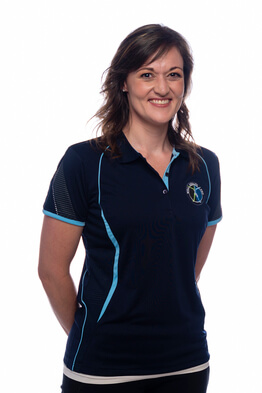Think of the first thing you did this morning when you woke up. Did you stretch before or after you opened your eyes? Or did you just roll out of bed and rush to start the day? Drinking a cup of coffee, getting dressed, brushing your teeth and opening the front door. All of these are examples of movement patterns that you’ve learnt through the years. Practice makes perfect, so even just scrolling through this article happens without thought or effort, because you’ve practiced scrolling on your phone millions of times. The small muscles in your hands coordinate with the small muscles in your eyes to scroll when you’ve finished reading a sentence. In the same way your neck muscles hold your head at the right angle to see the screen. The whole process happens without any conscious thought.
That is the “magic” of movement patterns and motor control.
What exactly is motor control?
Motor control can be seen as an umbrella term for any and all movements that you decide to do. It’s not only the process of starting and completing the movement but also determines how fast or slow the movement is. The principle of motor control explains how you can either walk very softly or stomp your feet without needing two different sets of muscles.
Your brain and nervous system are ultimately in charge of motor control, so most of your daily activities happen without actually noticing each movement. However, if you think back, you had to practice these activities over and over again before you could do them automatically. Like learning to walk, write or ride a bicycle. After a lot of practice, an activity becomes a learned skill and happens without thinking. This process is called motor learning and this is the principle physiotherapists use during movement pattern retraining.
Why we use movement pattern retraining as part of treatment
Muscles, nerves, tendons, ligaments, and joints all have a normal range of movement. This movement can be divided into different parts – inner-, middle- or outer range – depending on how much tension there is in the structure. Think of an elastic. When there isn’t any tension the elastic is relaxed and has a lot of movement available. That would be the elastic’s “inner range”. Now when you pull on the ends of the elastic, the tension takes away some of the movement in the elastic as it stretches. You won’t feel a lot of resistance as you pull, because there’s still a lot of movement available. This would be mid-range and is usually the biggest part of any movement. If you keep on pulling and applying more tension, you will reach a point where there is resistance to movement. At this point, you have reached outer range. If you ignore the resistance and keep adding tension, the elastic will fail or break.
Just like an elastic, there is an ideal, or safe, amount of tension where the structures in your body perform at their best. Not enough tension means too much movement which can lead to injury. Too much tension overloads the structure, also causing damage or injury. We use movement pattern retraining to teach you to find this safe, or ideal, zone of movement.
Benefits of movement pattern retraining:
- Decrease strain on nerves and joints
- Use less effort during movement
- Less tension on injured structures
- Targeted muscle strengthening
- Improve body and postural awareness
- Pain management
- Decrease risk of re-injury
- Use right muscle for right task
- Can improve performance (if an incorrect movement pattern is the cause of poor technique)
“A small change to how you move can make a big difference.”
Why do I need “retraining” if I already know how to do the movements?
Treatment of almost any injury or painful condition will involve some form of movement retraining. Humans are creatures of habit and our bodies adapt to an incorrect movement pattern very quickly. Like starting to walk with a limp if you have a thorn in your foot. Our brain’s main goal is survival and the easiest way to keep going – or surviving – in this case, will be to walk with a limp. In many painful conditions, your body “forgets” the original, correct movement and replaces it with an easier variation.
In the presence of pathology or pain, we often find that this dysfunctional pattern was the reason the pain started or why the injury doesn’t heal. Initially the new movement pattern took some pressure off the injured structure. Unfortunately, taking pressure off one area means adding pressure to other structures. Over time, this constant overload means that some muscles also get weaker due to disuse because your body has learned to use other muscles. One muscle or area is on a semi-permanent holiday and another does both jobs. A definite recipe for disaster somewhere down the line.
Different types of application
In the world of movement science and physiotherapy, almost every form of rehabilitation can be described as movement pattern retraining. There are some aspects that these different techniques have in common, for example using extrinsic or intrinsic learning.
With regards to movement pattern retraining, extrinsic learning is learning a new skill of movement by “thinking”. Your physiotherapist will explain what is expected and what you should see or feel. You perform the exercise and the therapist will guide and correct your movements as needed. This is a conscious process that requires concentration and focus.
Intrinsic learning, on the other hand, can be regarded as learning a new skill by “feeling”. All your senses continuously send information to your brain while you move. Your brain is like a central processor that sifts through the information and sends a message back to your body to adapt as needed. For instance, if you’re climbing stairs and hit your toe on the edge of a step, you will adapt and unconsciously lift your foot higher to avoid making the same mistake again. This is a simple example of intrinsic learning, but the same principle applies to many exercises and movement strategies where your movement keeps changing according to the feedback from your senses.
Let’s look at a common injury, like a hamstring muscle tear, as an example. In the early phases of healing, the muscle should be protected for healing to take place. We will use movement pattern retraining to teach you how to use your hip and knee without overloading the injured hamstring. As your pain stats to improve and healing takes place, we will start retraining leg movements. Throughout the healing process, the movements will get bigger and more complex, getting you back to optimal function.
Changes you’ll notice:
Movement pattern retraining often feels like learning to move your ears. Trying to move your ears will feel impossible, almost as if the message from your brain isn’t reaching the muscles. With practice, at some point, you will manage a small movement. Now your brain can go to work trying to figure out how you managed the movement until you have no trouble showing off your new skill.
As you repeat movements or exercises, your awareness of what exactly you’re doing and feeling will improve. Initially, the exercises will take a lot of concentration and focus. As you get used to the movement and more in tune with what you’re feeling, you’ll manage to do the exercise correctly with less effort. After some more practice, you will be doing the activities without any thought or effort.
Changes on a neural level:
What you’ll feel during movement retraining:
Movement pattern retraining should not be painful. Some discomfort is acceptable, but not to the level of pain. Pain is a protective mechanism. Therefore, forcing your way through pain will just reinforce the bad habits that you’re trying to retrain. You must performing the movement and your physiotherapist guides and corrects you as needed.
How long does it take?
Every person learns at a different pace, so there’s no specific time attached to movement pattern retraining. Your physiotherapist will also use other techniques and modalities during your sessions to treat your specific problem. Some of the techniques used during the treatment will be aimed at retraining movement at an unconscious level. Other specific exercises will involve conscious effort from you to learn a new movement pattern or skill.
How many times should I get movement pattern retraining?
Your body takes time to adapt and learn new habits, so you won’t always notice the effect of movement pattern retraining immediately. Imagine trying to write with your other hand. Writing usually happens automatically due to years of practice, but you can transfer the skill to your other hand with a lot of dedication, effort and repetition. However, patients will often have noticeable relief from their symptoms after the first session, simply by changing a small part of the movement.
Your physiotherapist will discuss a treatment plan with you, we’ll give you an idea of how long it will take for your condition to improve and how often treatment is needed. In some cases we’ll need 6-8 sessions. Mostly we see you twice during your first week, and once a week for the next two weeks. Thereafter once every second week in the next month.
What can I do at home to make the treatment more effective?
New habits take time to form and old habits die hard. You tend to fall back into bad habits and movement patterns in between sessions, putting extra strain on your injury. Rehabilitation is a process, so your physiotherapist will reassess and adapt during each appointment to keep you on the right track to recovery.
There are a few things you can do at home to get the most benefit from movement pattern retraining:
- Every movement is a skill – concentrate on how you move during the day.
- Focus while doing your prescribed home exercises.
- Be conscious of how you move.
- Don’t get frustrated – take a break and try again later.
- Doing your exercises for short periods throughout the day will help you to master new habits faster and avoid fatigue.
- Quality over quantity – focus on doing the exercises correctly rather than how many times you do the exercise.
- Avoid old habits and patterns that your physiotherapist made you aware of.
- Make a mental note of positions or movements that hurt and tell your physio at your next session.
Cost of movement pattern retraining
Movement pattern retraining will never be used as a full session on its own. This technique is a valuable part of your treatment, but our physiotherapists will also use a range of other modalities during you treatment. Your physiotherapist will determine which techniques and modalities are appropriate for your problem to help you recover and get back to doing what you love.
Medical Aid Codes – 501, 305 or 708
Movement pattern retraining forms part of the medical aid codes 501, 305 or 708. Retraining is combined with other techniques that make up one of these codes.
This technique in isolation will not fix your problem. It’s the combined treatment package that leads to real improvement. Most good medical aids offer re-imbursement for rehabilitation, movement retraining and consultations.
Does it make a difference to have an experienced physiotherapist apply movement pattern retraining?
Absolutely! Our physiotherapists have years of clinical experience and in-depth knowledge of biomechanics. We understand different painful conditions and injuries, and will know if movement pattern retraining is appropriate for your problem. Experience allows your therapist to diagnose your problem and identify dysfunctional movement patterns.
Experience means that your physiotherapist can spot small abnormal movements when you do something you take for granted, like walking down the passage or getting up from a chair. Skill is knowing what to do about it. Simply making you aware of the abnormal movement doesn’t really help you to fix it. A physio is trained to use different techniques and strategies to get to the cause of this dysfunction and address each different aspect. Whether it’s caused by pain, stiffness, muscle weakness, habit, or even a combination of these – your physio knows where to look and what to treat. Addressing the whole system makes movement pattern retraining effective in getting the long-term results you are looking for.





